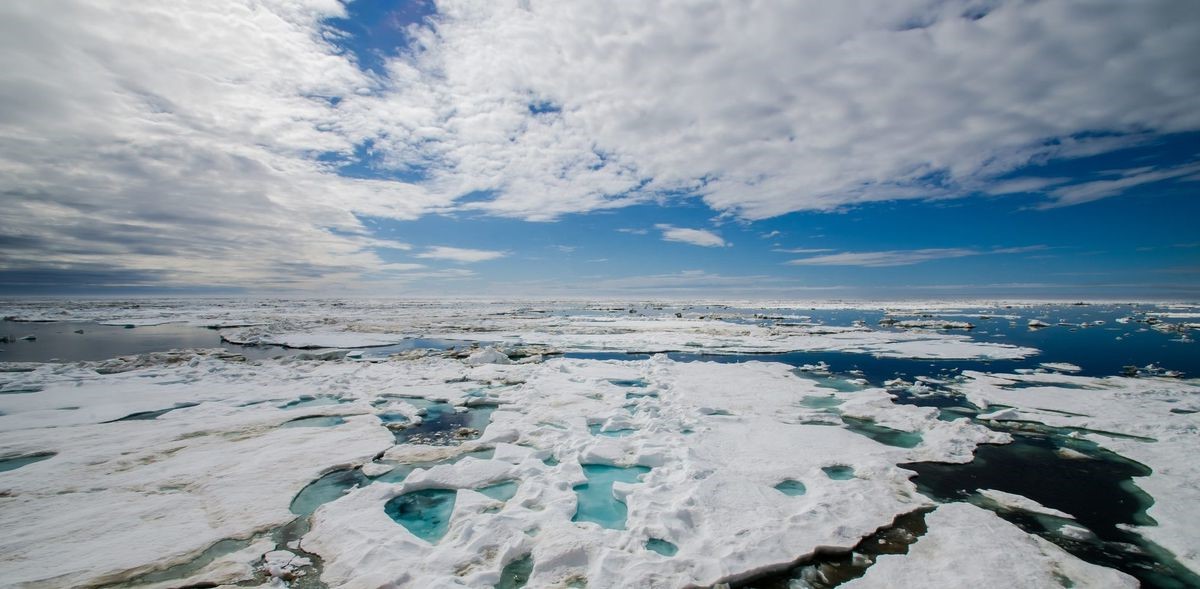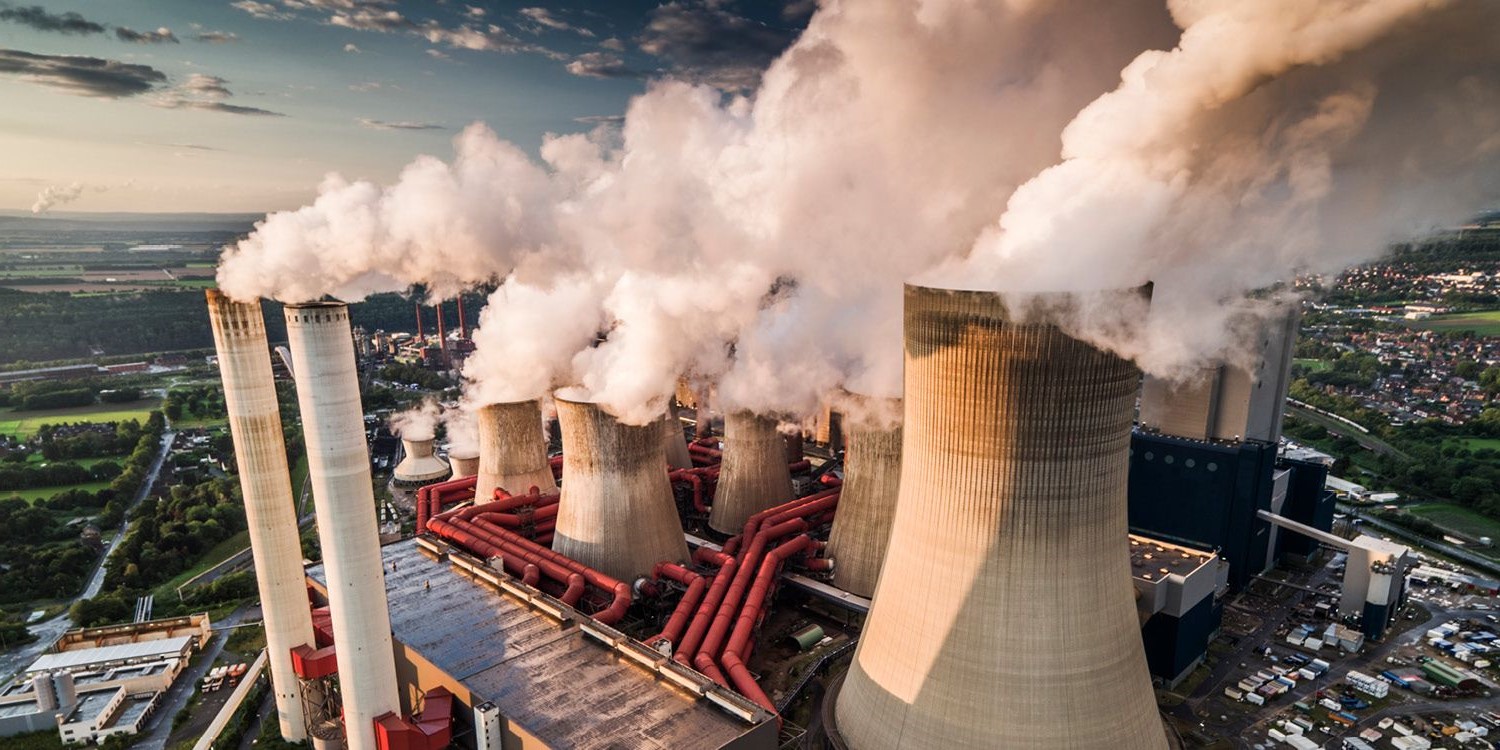Home>Weather and Climate>Latest Global Temperature Trends In 2022


Weather and Climate
Latest Global Temperature Trends In 2022
Modified: April 28, 2024
Stay updated on the latest global temperature trends in 2022. Explore the impact of weather and climate changes on our planet. #Weather #Climate #GlobalTemperatureTrends
(Many of the links in this article redirect to a specific reviewed product. Your purchase of these products through affiliate links helps to generate commission for Temperatures.com, at no extra cost. Learn more)
Table of Contents
Introduction
The Earth's climate is a complex and dynamic system that influences the weather patterns and temperature variations experienced across the globe. Understanding the latest global temperature trends in 2022 is crucial for comprehending the ongoing changes in our climate and their potential implications for ecosystems, economies, and societies worldwide.
In recent years, the issue of climate change has garnered significant attention due to the observable shifts in temperature patterns and the associated impacts on various aspects of life on Earth. From extreme weather events to melting polar ice caps, the signs of a changing climate are becoming increasingly evident. As such, monitoring and analyzing global temperature trends have become essential for scientists, policymakers, and the general public alike.
The year 2022 presents an opportunity to delve into the latest data and observations regarding global temperature trends. By examining the intricate interplay of natural and anthropogenic factors influencing temperature variations, we can gain valuable insights into the current state of the Earth's climate and its potential trajectory in the coming years.
Throughout this article, we will explore the multifaceted factors affecting global temperature trends, delve into the methodologies and data sources used to track these trends, and examine regional variations in temperature patterns. Furthermore, we will consider the implications of these trends for shaping effective climate change policies and fostering sustainable practices.
As we embark on this exploration of the latest global temperature trends, it is essential to approach the subject with an open mind and a commitment to understanding the complexities of our planet's climate system. By doing so, we can cultivate a deeper awareness of the challenges and opportunities presented by the evolving global temperature trends in 2022.
Read more: Global Temperature Trends
Factors Affecting Global Temperature Trends
Global temperature trends are influenced by a myriad of interconnected factors, encompassing natural phenomena and human activities. Understanding these factors is crucial for comprehending the complexities of climate dynamics and the drivers behind temperature variations observed across the planet. Here are the key factors affecting global temperature trends:
1. Greenhouse Gas Emissions
The release of greenhouse gases, such as carbon dioxide (CO2), methane (CH4), and nitrous oxide (N2O), into the atmosphere is a primary driver of global temperature trends. These gases trap heat, leading to the greenhouse effect, which contributes to the overall warming of the Earth's surface. Human activities, including the burning of fossil fuels, industrial processes, and deforestation, have significantly increased the concentration of greenhouse gases in the atmosphere, amplifying their impact on global temperatures.
2. Solar Activity
Variations in solar radiation, including sunspot cycles and solar flares, can influence global temperature trends. While the Sun is the primary source of energy for the Earth's climate system, fluctuations in solar activity can contribute to short-term temperature changes. Scientists continue to study the intricate relationship between solar variability and its effects on the Earth's climate.
3. Aerosols and Particulate Matter
Aerosols, which include tiny particles and droplets suspended in the atmosphere, can have both warming and cooling effects on the climate. While certain aerosols can scatter sunlight and contribute to cooling, others, such as black carbon from incomplete combustion, can absorb sunlight and contribute to warming. The presence of aerosols and particulate matter in the atmosphere represents a complex factor influencing global temperature trends.
4. Ocean Circulation Patterns
The oceans play a pivotal role in regulating the Earth's temperature through their vast capacity to store and transport heat. Ocean circulation patterns, such as the El Niño-Southern Oscillation (ENSO) and the Atlantic Multidecadal Oscillation (AMO), can exert significant influence on regional and global temperature variations. These complex interactions between the oceans and the atmosphere contribute to the intricate tapestry of global temperature trends.
5. Land Use Changes
Alterations in land use, including urbanization, deforestation, and agricultural practices, can impact local and regional temperature patterns. Urban heat islands, for example, result from the concentration of human activities and infrastructure in urban areas, leading to elevated temperatures compared to surrounding rural areas. Land use changes can thus contribute to localized temperature trends with broader implications for the global climate system.
6. Feedback Mechanisms
Feedback mechanisms within the Earth's climate system can either amplify or dampen the effects of external factors on global temperature trends. For instance, the melting of polar ice caps reduces the Earth's albedo, leading to increased absorption of solar radiation and further warming. Similarly, the release of methane from thawing permafrost represents a feedback mechanism that can intensify the greenhouse effect.
By comprehensively examining these factors, we can gain a deeper appreciation for the intricate web of influences shaping global temperature trends. The interplay of natural processes and human activities underscores the need for concerted efforts to mitigate the drivers of climate change and foster sustainable practices that promote a balanced and resilient global climate system.
Data Sources and Methodology
The comprehensive analysis of global temperature trends relies on a diverse array of data sources and robust methodologies, enabling scientists to derive accurate insights into the Earth's changing climate. These data sources and methodologies form the bedrock of climate research, providing the empirical foundation for understanding temperature variations and their underlying drivers. Here's an overview of the key components comprising the data sources and methodologies utilized in tracking global temperature trends:
Read more: Monthly Temperature Trends in California
1. Surface Temperature Measurements
Ground-based weather stations, distributed across the globe, serve as fundamental sources of surface temperature data. These stations employ various instruments, such as thermometers and automated sensors, to record temperature measurements at regular intervals. The data collected from these stations form the basis for assessing long-term temperature trends and variations across different geographical regions.
2. Satellite Observations
Satellite-based remote sensing technologies have revolutionized the monitoring of global temperature trends by providing comprehensive coverage of the Earth's surface. Advanced satellite instruments capture thermal infrared radiation emitted by the Earth, allowing for the derivation of precise temperature measurements across diverse landscapes, including remote and inaccessible regions. Satellite observations contribute valuable spatial and temporal data, enhancing the understanding of global temperature patterns.
3. Oceanic Temperature Monitoring
The world's oceans play a pivotal role in regulating the Earth's climate, making oceanic temperature measurements essential for comprehensive climate analysis. Buoy networks, ship-based measurements, and autonomous floats equipped with temperature sensors enable the continuous monitoring of sea surface temperatures and ocean heat content. These oceanic temperature data sources offer critical insights into the dynamics of marine environments and their influence on global temperature trends.
4. Climate Models and Simulations
Sophisticated climate models, powered by supercomputing capabilities, simulate the complex interactions of the atmosphere, oceans, land surfaces, and ice cover. These models integrate historical climate data and project future scenarios based on different greenhouse gas emissions trajectories. By comparing model outputs with observed temperature trends, scientists can validate the accuracy of climate simulations and refine their understanding of the factors driving global temperature variations.
5. Data Integration and Analysis
The integration of diverse datasets from surface stations, satellites, oceanic sensors, and climate models is a cornerstone of modern climate research. Advanced statistical techniques, including spatial analysis and temporal trend assessments, enable scientists to synthesize and analyze vast volumes of temperature data. This integrated approach facilitates the identification of long-term trends, spatial patterns, and anomalies, contributing to a comprehensive understanding of global temperature dynamics.
In essence, the convergence of surface measurements, satellite observations, oceanic monitoring, climate simulations, and advanced data analysis techniques forms a robust framework for tracking and interpreting global temperature trends. The synergy of these data sources and methodologies empowers scientists to unravel the intricacies of our planet's climate system, providing invaluable insights for addressing the challenges posed by ongoing climate change.
Regional Variations in Temperature Trends
Regional variations in temperature trends manifest as diverse and dynamic patterns across different geographical areas, reflecting the complex interplay of local climate dynamics, geographical features, and atmospheric circulation patterns. These variations underscore the nuanced nature of global temperature trends and their localized impacts on ecosystems, communities, and economies. Here, we delve into the multifaceted nature of regional temperature trends, shedding light on the distinct characteristics and implications of temperature variations across various regions.
1. Polar Regions
The polar regions, including the Arctic and Antarctic, exhibit some of the most pronounced temperature trends on the planet. Rapid warming in these areas has led to the accelerated melting of polar ice caps and the transformation of polar ecosystems. The amplified temperature rise in polar regions has far-reaching consequences, contributing to sea level rise, altering ocean circulation patterns, and impacting indigenous communities reliant on polar environments.
2. Tropical Zones
Tropical regions experience relatively stable and high temperatures, with discernible variations influenced by phenomena such as El Niño and La Niña. The equatorial belt showcases distinct wet and dry seasons, with temperature trends influencing precipitation patterns and the dynamics of tropical ecosystems. The warming of tropical oceans also fuels the intensity of tropical cyclones, shaping the resilience of coastal communities to extreme weather events.
Read more: Monthly Temperature Trends Analysis
3. Temperate Climates
Temperate regions, characterized by moderate seasonal variations, have witnessed shifts in temperature trends, impacting agricultural productivity and ecological balances. The warming of temperate climates has implications for the timing of plant growth, the behavior of migratory species, and the frequency of heatwaves and cold spells. These trends pose challenges for adaptive strategies in agriculture and conservation efforts in temperate ecosystems.
4. Coastal Areas
Coastal regions are particularly susceptible to temperature trends due to their proximity to marine environments and vulnerability to sea level rise. Rising temperatures influence coastal ecosystems, including coral reefs and mangrove forests, while also affecting human settlements and infrastructure along coastlines. The interaction of temperature trends with oceanic processes shapes the resilience of coastal communities and the sustainability of marine resources.
5. Mountainous Terrain
Mountainous areas exhibit distinct temperature trends influenced by elevation gradients and topographical features. The warming of mountainous regions contributes to glacial retreat, altering water availability in downstream areas and impacting mountain-dependent communities. Temperature variations in mountainous terrain also influence biodiversity patterns and the stability of alpine ecosystems.
6. Urban Heat Islands
Urban areas, characterized by concentrated human activities and infrastructure, often experience elevated temperatures compared to surrounding rural areas, a phenomenon known as the urban heat island effect. The intensification of temperature trends in urban environments has implications for public health, energy demand, and urban planning strategies aimed at mitigating heat-related risks.
In essence, the regional variations in temperature trends underscore the diverse and intricate nature of global climate dynamics. By recognizing the distinct characteristics and implications of temperature variations across different regions, we can develop targeted strategies for adaptation, resilience-building, and sustainable development in the face of evolving climate patterns. Understanding regional temperature trends is essential for fostering climate-resilient communities and ecosystems worldwide.
Implications for Climate Change Policies
The latest global temperature trends in 2022 carry profound implications for the formulation and implementation of effective climate change policies. As the scientific understanding of climate dynamics continues to evolve, it is imperative to translate this knowledge into actionable policies that address the challenges posed by ongoing climate change. The implications of global temperature trends for climate change policies encompass a spectrum of considerations, ranging from mitigation strategies to adaptation measures and international cooperation.
1. Mitigation Imperatives
The escalating global temperature trends underscore the urgent need for robust mitigation efforts aimed at curbing greenhouse gas emissions and limiting the warming of the planet. Climate change policies must prioritize the transition to renewable energy sources, the enhancement of energy efficiency, and the decarbonization of industries. Additionally, measures to promote sustainable land use, afforestation, and carbon sequestration are essential components of mitigation strategies aimed at stabilizing global temperatures.
2. Adaptation and Resilience
The regional variations in temperature trends necessitate tailored adaptation and resilience-building measures to address the diverse impacts of climate change. Climate change policies should prioritize investments in climate-resilient infrastructure, early warning systems for extreme weather events, and the protection of vulnerable communities and ecosystems. Emphasizing nature-based solutions, such as coastal restoration and ecosystem conservation, can enhance the adaptive capacity of societies facing temperature-related challenges.
3. Science-Driven Decision-Making
Incorporating the latest global temperature trends into climate change policies requires a commitment to evidence-based decision-making informed by scientific research and climate modeling. Policymakers must engage with climate scientists to understand the implications of temperature trends on various sectors, including agriculture, water resources, and public health. By integrating scientific insights into policy formulation, governments can develop proactive strategies that anticipate and address the impacts of changing temperature patterns.
4. International Collaboration
Global temperature trends transcend national boundaries, necessitating international collaboration and cooperation in addressing climate change. Climate change policies should prioritize diplomatic efforts to foster multilateral agreements, technology transfer, and financial support for climate action. By engaging in global partnerships, countries can collectively work towards mitigating temperature trends and building resilience, recognizing that the impacts of climate change are a shared global challenge.
5. Equity and Justice
The implications of global temperature trends for climate change policies extend to considerations of equity and justice, particularly in addressing the disproportionate impacts of temperature variations on vulnerable communities and developing nations. Policies should prioritize social equity, ensuring that marginalized populations have access to resources and support for climate adaptation. Additionally, international climate finance mechanisms should prioritize funding for adaptation and resilience-building in regions most affected by temperature trends.
In essence, the implications of global temperature trends for climate change policies underscore the imperative for decisive and coordinated action at local, national, and international levels. By integrating the latest scientific insights into policy frameworks, prioritizing mitigation and adaptation measures, and fostering global cooperation, policymakers can navigate the complexities of temperature trends and chart a course towards a more sustainable and resilient future.
Conclusion
The latest global temperature trends in 2022 underscore the dynamic and multifaceted nature of our planet's climate system. As we navigate the complexities of temperature variations, it becomes increasingly evident that the interplay of natural processes and human activities shapes the trajectory of global temperatures. The implications of these trends extend far beyond scientific inquiry, permeating into the realms of policy, societal resilience, and environmental stewardship.
The convergence of factors influencing global temperature trends, from greenhouse gas emissions to regional climate dynamics, highlights the interconnectedness of the Earth's climate. It is imperative to recognize that the observed temperature variations are not isolated phenomena but rather integral components of a complex and evolving global climate system.
As we reflect on the regional nuances of temperature trends, from the polar regions to urban environments, it becomes clear that localized impacts reverberate on a global scale. The implications for ecosystems, communities, and economies underscore the imperative for targeted adaptation strategies and sustainable development practices that account for the diverse manifestations of temperature trends.
In the realm of policy and governance, the implications of global temperature trends necessitate a paradigm shift towards proactive and science-driven decision-making. Mitigation imperatives, adaptation strategies, international collaboration, and considerations of equity and justice must underpin climate change policies to address the challenges posed by evolving temperature patterns.
The journey of understanding global temperature trends is ongoing, marked by a commitment to leveraging scientific insights for the betterment of our planet and its inhabitants. By embracing the complexities of temperature variations and their implications, we can foster a collective ethos of environmental stewardship, resilience, and sustainability.
In conclusion, the latest global temperature trends in 2022 serve as a call to action, urging us to transcend boundaries and work collaboratively towards a climate-resilient and sustainable future. By embracing the nuances of temperature dynamics and integrating them into our collective consciousness, we can forge a path towards a balanced and harmonious coexistence with the Earth's intricate climate system.









